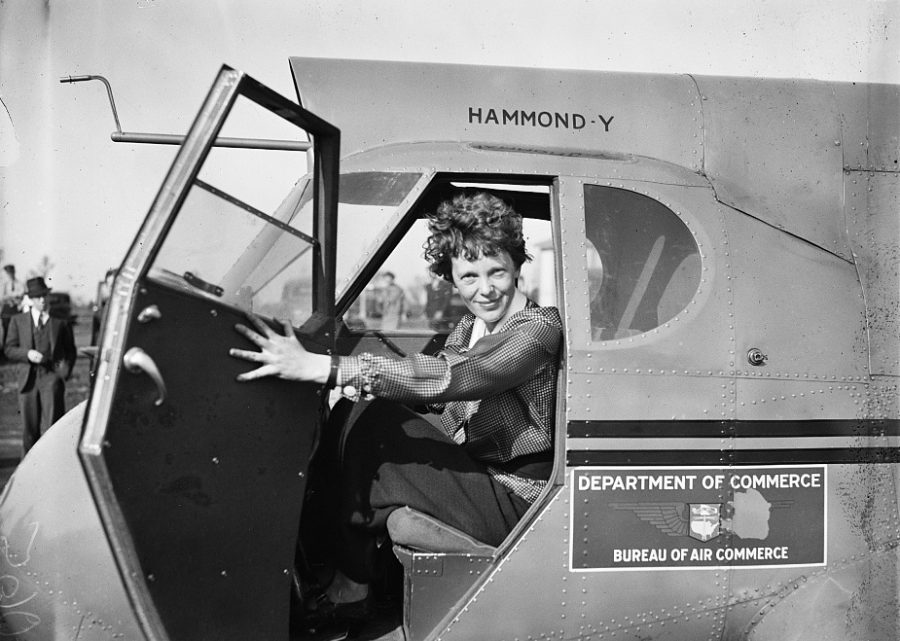When she was 39, Amelia Earhart declared she was going to fly around the world. Earhart and her navigator Fred Noonan took off from Oakland, California, and set forth their 29,000-mile-long trip.
A month and one day later, with only three-quarters of the trip completed, they vanished.
As hope for the truth dissipated, a partial skeleton was found on the island Nikumaroro. The bones had more similarity to Earhart than 99% of individuals in an extensive sample reference, meaning these remains could be the key to understanding what truly happened.
But despite similarities in the bones, putting together the pieces of her disappearance requires more than Earhart’s final location, and thus the mystery endures.
After taking off from Papua New Guinea, Howland Island was Earhart and Noonan’s planned landing site. A U.S. Coastguard vessel, the Itasca, waited there to guide their landing.
Instead, the two lost contact with the Itasca somewhere over the Pacific in Earhart’s twin-engine Lockheed Electra plane. A search and rescue mission soon took place. Aircraft and ships from the U.S. Navy and Coast Guard were used to search 250,000 square miles of the ocean; there was no sign of Earhart or her plane.
Stating Earhart’s motivation and strength, Jayne Zanglein, author of The Girl Explorers, felt Earhart was a historical woman who got buried in the mystery; the circumstances of her death overshadow her remarkable qualities and accomplishments in life.
“Amelia should not be heralded through her death, although people love a good mystery. She was full of grace, charm, and humility. When she joined the Society of Woman Geographers she wrote, ‘I am very much honored but doubtful of my qualifications. However, if the other members will bear with me for a while, I’ll try to make up the deficiencies.’ That comment smacks of being a woman, and her insecurities, but I believe it is much more. She was unsatisfied with being a ‘sack of potatoes’ –a passenger–on her first flight. She was driven to do more.”
Candace Fleming, the author of Amelia Lost: the Life and Disappearance of Amelia Earhart, voiced similar sentiments as Zanglein, noting that Earhart is far more than her death.
“I absolutely believe we should be focusing more on Earhart’s life than her death. That’s why I called my book Amelia Lost. It wasn’t because we lost her over the Pacific, but rather, we’ve forgotten the real reason she should be remembered,” Fleming said.
The story of Earhart hits close to home for many women, Fleming being one of them, “Her disappearance devastated my mother. She’d talk about it when I was a child, and although decades had passed, I could still hear the sadness and longing in her voice. Amelia Earhart became as important to me as she had been to my mom long before I ever wrote the book.”
According to Fleming, the “real reason” Earhart should be remembered is for her accomplishments as a woman.
“She proved that women didn’t have to stick within the traditional roles of wife and mother. By her example, she encouraged other females to do the same thing. This was so rare for her time. She truly was a feminist and a game-changer for women, but we forget all about that,” Fleming said.
Yet, people still continue to fixate on Earhart’s mysterious disappearance rather than her accomplishments, and misinformation fueled by the accessibility of the internet currently conceals the factually based theories of Earhart’s disappearance.
Diving into the cause of these deceptions, Matthew Lasar, a lecturer at the University of California Santa Cruz Department of History, with expertise in conspiracies, says Earhart fans tend to cling to more misleading theories in an act of hope.
“I think that lots of people glom onto Amelia Earhart theories because they see such heroism and nobility in her. So it pains them to think that in the end, she just ran out of gas. Living the remainder of her life on some remote island, or being captured by the Japanese Empire, or serving as a spy, or hiding out in plain sight for some mysterious reason just feels a lot more purposeful for her fans — a more fitting end for a true hero,” Lasar said.
As Lasar mentioned, a popular hypothesis suggests that the Japanese took Earhart and Noonan prisoner. In this scenario, they failed to reach Howland Island and instead forcibly landed in the Japanese-held Marshall Islands, as supported by several witnesses. This idea came about from a photograph found in the National Archives, as it was implied to be a picture of Earhart and Noonan on Jaluit Atoll in the Marshall Islands.
Later, a Japanese blogger went to the country’s national library and discovered the photo published in 1935 in a Japanese travelogue. This was nearly two years before Earhart took off on her last flight.
According to other theorists, Earhart and Noonan were spies, meaning their round-world trip was just a cover-up for observing Japanese fortifications in the Pacific. But, this was four years before the attack on Pearl Harbor; Japan and the U.S. were not yet enemies.
Proponents of this concept would also suggest Earhart did not die but was released; she was rumored to have then returned to the U.S. under a fake name, Irene Bolam. Bolam repeatedly denied these claims, still, believers insisted she was Earhart even after she died in 1982.
One of the most factually based theories states Earhart and her navigator landed on Nikumaroro (formerly Gardner Island), an island near their planned landing site.
I’m inclined to think that the Navy was right, and she and her navigator fell into the Pacific Ocean after they ran out of gas. — Matthew Lasar
According to Lasar, this theory does not fall out of the realm of possibility.
“There’s the landing on then-Gardner Island theory, which has its partisans. But there’s no conspiracy there,” Lasar said.
This particular theory started when British officials retrieved a partial human skeleton from Nikumaroro in 1940. The bones were then examined and interpreted as male by physician D.W. Hoodless in 1941.
Over 70 years later, an anthropologist of the University of Tennessee, Richard Jantz, analyzed the skeleton as a female of European ancestry, with the height of 5-foot-2, fitting a rough description of Earhart.
Utilizing new tools, Jantz discovered once and for all that the bones were most likely Earhart’s.
The official position of the U.S. government states Earhart and Noonan crashed into the Pacific Ocean while attempting to reach Howland Island.
Despite all of this, rumors still thrive around Earhart’s disappearance, belittling the story of a historical woman who proved to other women that they didn’t have to stick to the roles they were defined by.














